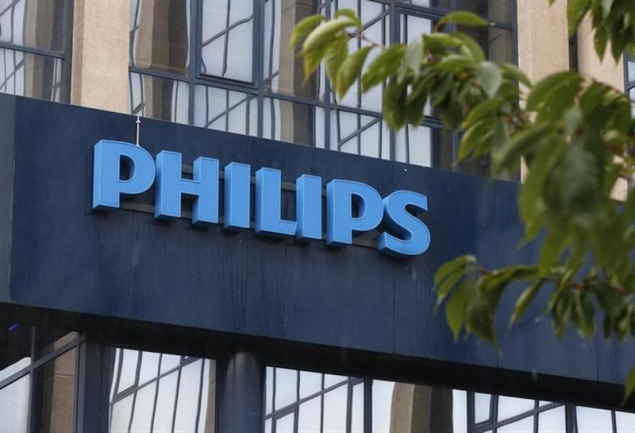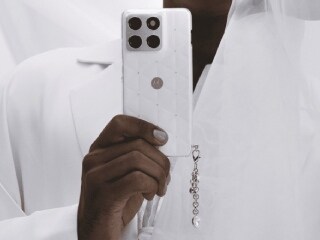Philips switches off the TV in turnaround bid

Nothing, it seems, is sacred in Chief Executive Frans van Houten's makeover of Philips to focus on the healthcare, lifestyle and energy needs of ageing and increasingly prosperous consumers whether high-margin electric toothbrushes and shavers, street lighting or hospital equipment.
To make Philips more lean and nimble has taken a rigorous monitoring of its entire portfolio of products and markets combined with a ruthless willingness to jettison weaklings and poor performers such as the home entertainment businesses, and to concentrate instead on higher-margin market leaders.
Van Houten picked new managers at each of the company's three core businesses consumer lifestyle, healthcare and lighting and is shaking up a stodgy culture in a firm that once led in R&D but sometimes fell short in the marketplace.
The company which first experimented with televisions and radios later lost out in the videotape wars of the 1970s and 1980s and did not react quickly enough when consumers shifted online for their music and other entertainment.
Van Houten has also cut jobs and overheads, including office space and IT systems, scaled back inventory to free up cash flow, and launched a 2 billion euro share buyback.
The strategy has started to pay off. The divestments and four consecutive quarters of better-than expected results have pushed the stock to its highest level since March 2011, just before Van Houten officially took over as CEO, as Philips appears to be on track to achieve its 2013 targets.
"Exiting lifestyle entertainment for me is the real mark, these guys invented a lot of these consumer electronics we know, that is part of the Philips legacy," said Scott Cobb, principal at Southeastern Asset Management which is Philips' biggest shareholder with about 6.5 percent of the stock.
"For them to say 'this is a business that is marginally profitable, struggling with declining revenue and does not have scale to compete' sends a massively strong signal that this company and its management are not the old Philips."
Cobb said the 2 billion euro share buyback was also a strong buy signal because it showed the management was confident of delivering cost savings and pushing through change.
There is plenty of room for further improvement.
By some measures, such as the ratio of enterprise value (EV) to earnings before interest, tax, depreciation and amortisation , Philips looks undervalued against German conglomerate Siemens and General Electric , its rivals in the field of lighting systems and hospital equipment.
Starmine puts the forward 12 month for the Dutch firm at 6.8, versus 7.7 for Siemens and 18.7 for GE, whose figures analysts say are distorted because of its finance activities. Two French firms in the capital goods sector, Schneider Electric and Legrand , trade on multiples of 9.1 and 9.5 respectively.
Philips is also cheaper than two small European firms which compete purely in the home appliances sector. SEB of France, which owns the Moulinex brand, and De'Longhi of Italy, are valued at multiples of 7.2 and 7.9 respectively.
Based on other ratios such as price/book value, and EV/revenue, Philips ranks at the lower end of the group's range.
And with roughly one third of Philips' units still underperforming and in need of turnaround, according to Van Houten, there should be further upside for investors.
"There is much more potential to unlock. We need to stay at this for five years," Van Houten said, just two years into the turnaround, adding that too many companies "stop too early" when it comes to shaking up their business.
Red-amber-green
Van Houten became chief executive in April 2011, but during his months as CEO-in-waiting, he took a whirlwind tour of what was soon to become his global empire.
Stunned by the sheer number of different products available in a myriad of different markets, he realised the group had proliferated and had little inkling of which of these combinations made or lost money.
He worked closely with his chief financial officer, Ron Wirahadiraksa, and with chief strategist Jim Andrew, a former Boston Consulting Group partner who had worked in India and Singapore, to come up with his plan.
Using what he describes as a "dashboard" a computer model that monitors hundreds of combinations of products and the markets where they are sold he can keep track of profits, sales, market share and supply chain efficiency for anything from medical equipment in Malaysia to salad dicers in Russia.
Each business and market combination appears in red, green or amber, according to performance, and is further scrutinised for ways to squeeze more value out of it.
Recognising that Philips could no longer compete with low-cost Asian manufacturers such as Samsung Electronics and LG Electronics when it came to televisions and audiovisual equipment, Van Houten cut them loose.
The model isn't foolproof. High-growth countries are set high targets, but for example if growth hits 28 percent, just short of a 30 percent target, the targets may have to be eased slightly, Van Houten says.
The consumer division's underlying margin for earnings before interest, taxes and amortisation has already improved to 11.7 percent in the fourth quarter from 8.3 percent a year ago. With the sale of the low-margin audiovisual business, it should increase further, helped by its leading position in electric shavers and toothbrushes.
Overall, the consumer lifestyle division now accounts for a far lower percentage of group sales 26 percent in the fourth quarter, down from 36 percent two years ago while healthcare has climbed to about 41 percent of group sales, up from about 36 percent in the same period.
With home entertainment out of the way, the consumer division will focus on appliances such as coffee makers, electric shavers, and "airfryers" which cook low fat food.
Philips signed up Taiwanese actor and model Godfrey Gao to endorse its electric shavers in China, helping it to sell more than 10 million last year as it pushed into second and third-tier Chinese cities.
In Russia, the company has adapted its salad choppers to produce cubes because that is how Russians like their vegetables and the dicers have proved a hit, Van Houten said.
Historically, Philips had tied its fortunes to the developed markets of North America and Europe.
It was slow to exploit the rapid rise of emerging markets where billions of consumers craved a better lifestyle and higher standards of healthcare, and increasingly had the money to pay for it.
That's changing, if slowly. The share of sales derived from growth economies such as Brazil, Russia, India and China, as well as Africa and the Middle East, inched up to 35 percent in the fourth quarter, from 33 percent of the total two years ago, and is set to rise further, Van Houten said.
© Thomson Reuters 2013
Get your daily dose of tech news, reviews, and insights, in under 80 characters on Gadgets 360 Turbo. Connect with fellow tech lovers on our Forum. Follow us on X, Facebook, WhatsApp, Threads and Google News for instant updates. Catch all the action on our YouTube channel.
Related Stories
- Samsung Galaxy Unpacked 2025
- ChatGPT
- Redmi Note 14 Pro+
- iPhone 16
- Apple Vision Pro
- Oneplus 12
- OnePlus Nord CE 3 Lite 5G
- iPhone 13
- Xiaomi 14 Pro
- Oppo Find N3
- Tecno Spark Go (2023)
- Realme V30
- Best Phones Under 25000
- Samsung Galaxy S24 Series
- Cryptocurrency
- iQoo 12
- Samsung Galaxy S24 Ultra
- Giottus
- Samsung Galaxy Z Flip 5
- Apple 'Scary Fast'
- Housefull 5
- GoPro Hero 12 Black Review
- Invincible Season 2
- JioGlass
- HD Ready TV
- Laptop Under 50000
- Smartwatch Under 10000
- Latest Mobile Phones
- Compare Phones
- Realme P4x 5G
- OnePlus Ace 6T
- OPPO A6x 5G
- Samsung Galaxy Z TriFold
- Poco F8 Ultra
- Poco F8 Pro
- Huawei Mate 80 RS Master Edition
- Huawei Mate 80 Pro Max
- Asus ProArt P16
- MacBook Pro 14-inch (M5, 2025)
- Poco Pad M1
- Poco Pad X1
- Just Corseca Skywatch Pro
- Honor Watch X5
- Acerpure Nitro Z Series 100-inch QLED TV
- Samsung 43 Inch LED Ultra HD (4K) Smart TV (UA43UE81AFULXL)
- Asus ROG Ally
- Nintendo Switch Lite
- Haier 1.6 Ton 5 Star Inverter Split AC (HSU19G-MZAID5BN-INV)
- Haier 1.6 Ton 5 Star Inverter Split AC (HSU19G-MZAIM5BN-INV)

















